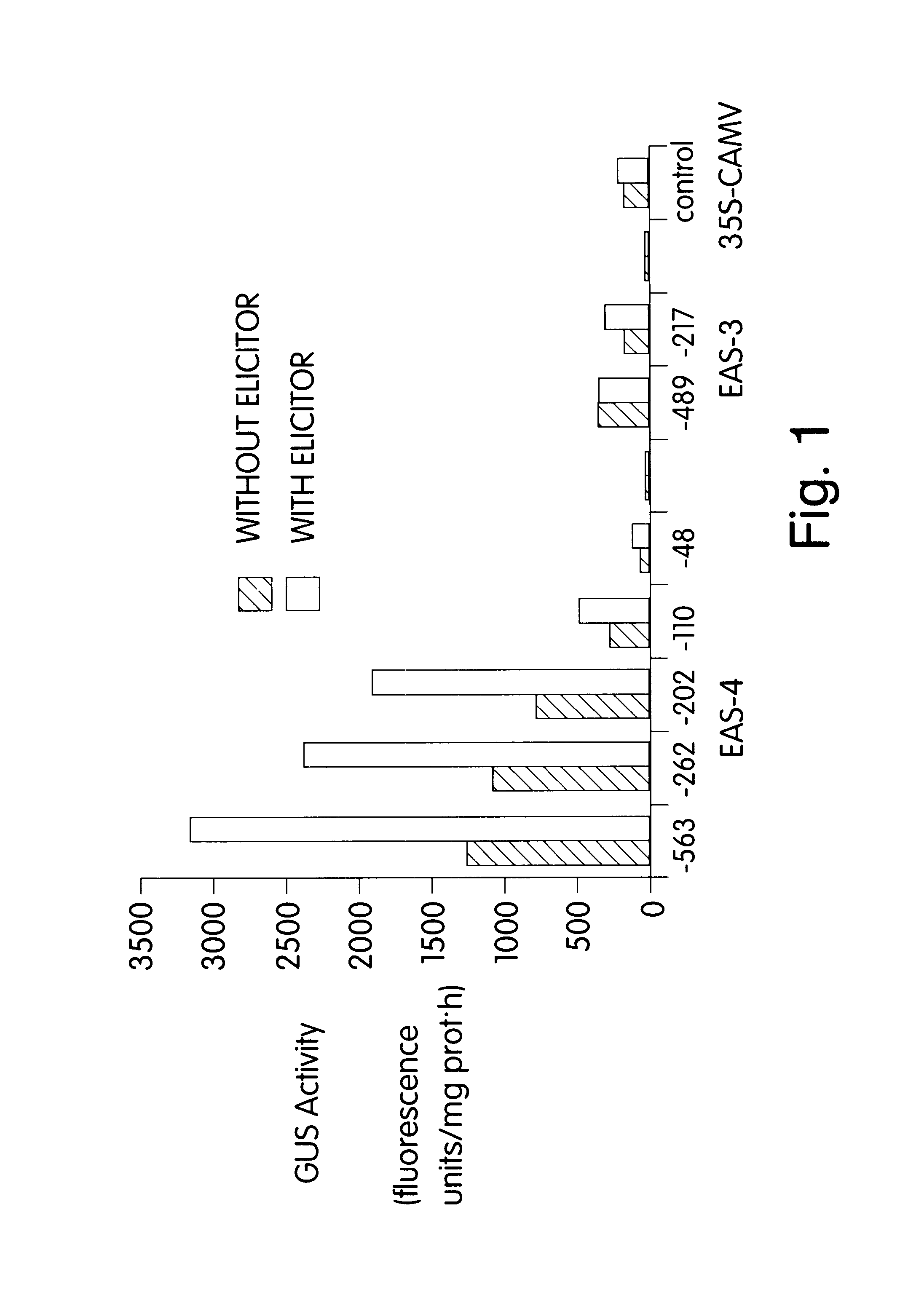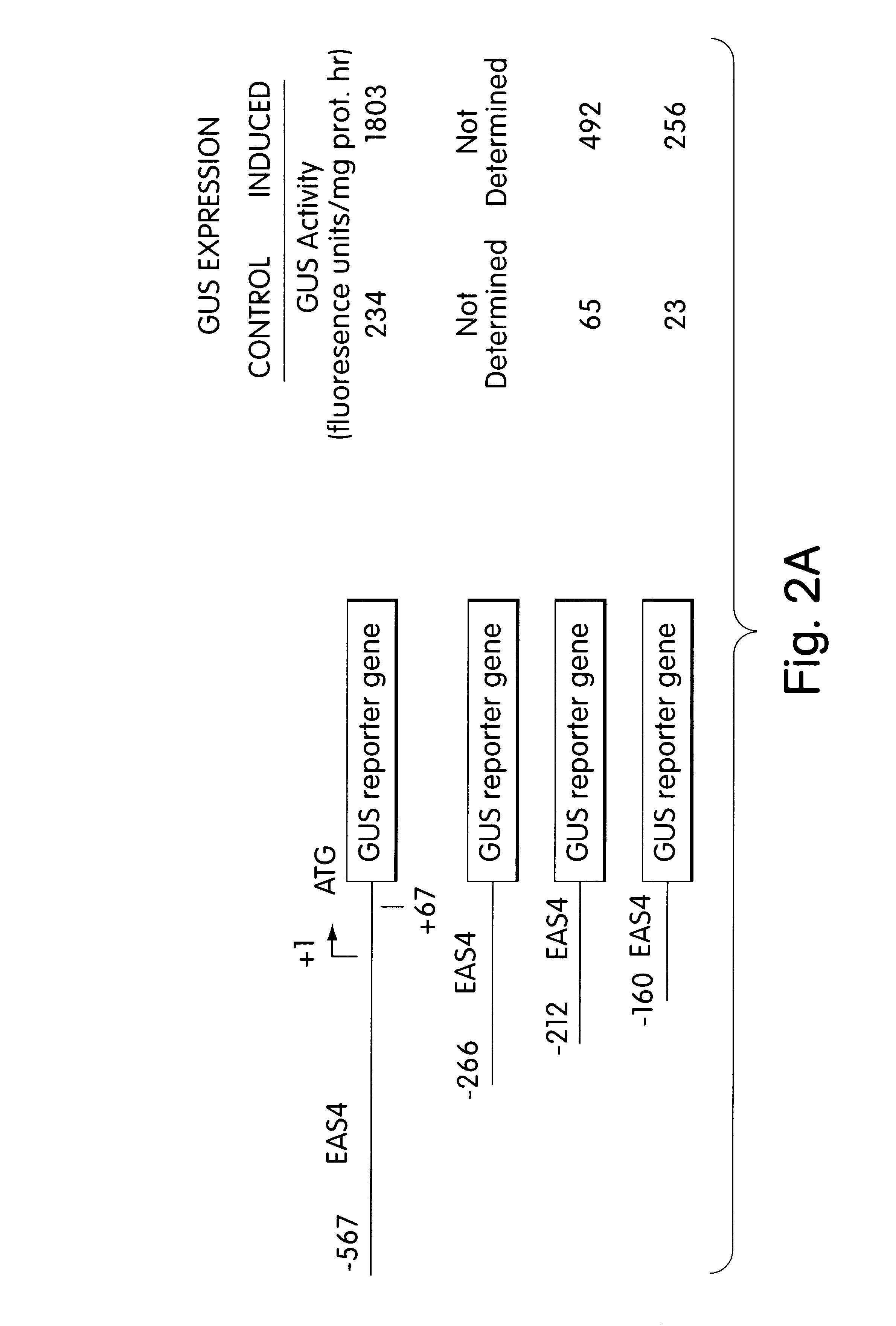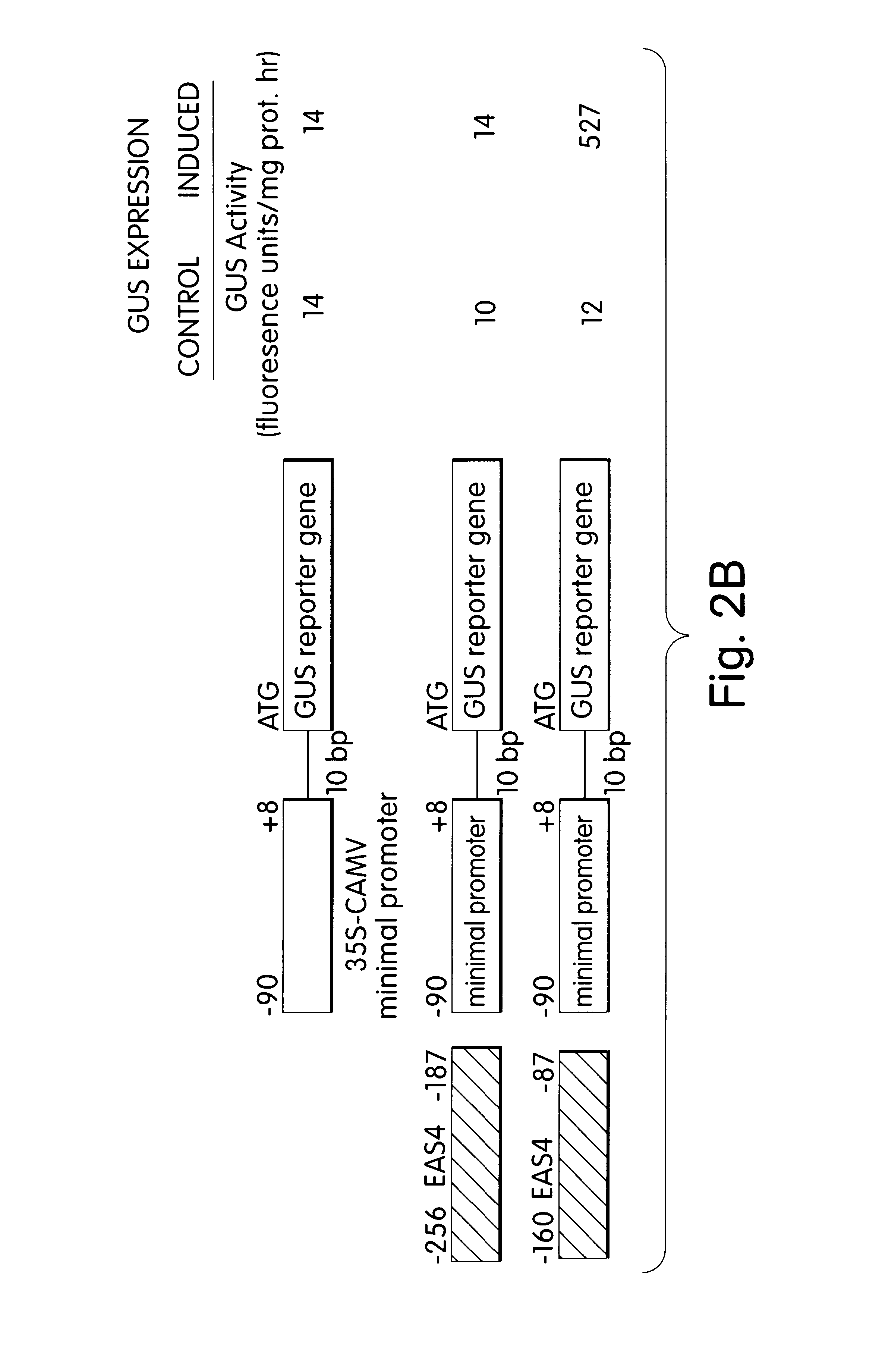Pathogen- or elicitor-inducible transcription regulatory element from the tobacco 5-EPI-aristolochene synthase gene and plants transformed therewith
- Summary
- Abstract
- Description
- Claims
- Application Information
AI Technical Summary
Problems solved by technology
Method used
Image
Examples
example 1
EAS-Specific Antibodies
Monoclonal and polyclonal antibodies specific for tobacco EAS were prepared as described by Vogeli et al. (1990) Plant Physiology 93:182-187. Additional antibody preparations could be made as polyclonal antibodies using purified EAS as antigen or using a peptide sequence conjugated to a carrier protein using well-known techniques. The amino acid sequence of a peptide for antibody production is selected from a particularly hydrophilic region of the protein (For antibody production technique, see, for example, Campbell (1994) Monoclonal Antibody Technology, Laboratory Techniques in Biochemistry and Molecular Biology, Vol. 13, Burdon and Knippenberg, eds, Elsevier, Amsterdam; Harlow and Lane (1988) Antibodies: A Laboratory Manual, Cold Spring Harbor Laboratory, Cold Spring Harbor, N.Y.).
example 2
DNA and Protein Sequence Determination
Sequence determinations of single-stranded and double-stranded DNAs were carried out by the dideoxynucleotide chain termination procedure [Sanger et al. (1977) Proc. Natl. Acad. Sci. USA 74:8073-8077], with a Sequenase kit from United States Biochemical Corp., Cleveland, Ohio) or an automated fluorescence-based system (Applied Biosystems, Foster City, Calif.).
example 3
Construction of a Full-Length EAS Clone
Nicotiana tabacum L. cv. KY14 cell suspension cultures were treated with Trichoderma viride cellulase (Type RS, Onozuka) at a final concentration 0.5 .mu.g / ml during rapid growth phase to induce the expression of EAS. Parallel suspension cell cultures which did not receive cellulase served as controls. Cells were collected by gentle vacuum filtration 4 hrs after the addition of the cellulase elicitor to the induced culture.
A cDNA library was prepared in pcDNAII (Invitrogen, San Diego, Calif.) from polyA.sup.+ RNA extracted from the N. tabacum cells treated for 4 hrs with elicitor. The library was screened by differential hybridization using polyA+ RNA prepared from the induced and control culture. Clones appearing to be positive were further screened by hybrid selection-in vitro translation-immunoprecipitation analysis as described by Alwine et al. (1979) Methods Enzymol. 68:220-242.
A putative positive EAS cDNA clone was used as a hybridization...
PUM
| Property | Measurement | Unit |
|---|---|---|
| Electrical conductance | aaaaa | aaaaa |
Abstract
Description
Claims
Application Information
 Login to View More
Login to View More - R&D
- Intellectual Property
- Life Sciences
- Materials
- Tech Scout
- Unparalleled Data Quality
- Higher Quality Content
- 60% Fewer Hallucinations
Browse by: Latest US Patents, China's latest patents, Technical Efficacy Thesaurus, Application Domain, Technology Topic, Popular Technical Reports.
© 2025 PatSnap. All rights reserved.Legal|Privacy policy|Modern Slavery Act Transparency Statement|Sitemap|About US| Contact US: help@patsnap.com



